
Tick Control Services in Lowcountry, SC
The South Carolina Lowcountry stretches from tidal rivers and blackwater swamps to long corridors of salt marsh and maritime forest. It’s a landscape built for outdoor life—porch evenings, kayak launches at first light, weekends on the water, and miles of trails under live oaks and pines. It’s also perfect habitat for ticks. Shaded fencerows in suburban neighborhoods, leaf litter under camellias and azaleas, palmetto and wax myrtle edges, and the breezy margins of tidal creeks all give ticks cover, humidity, and a steady flow of hosts. From Mount Pleasant, Daniel Island, and North Charleston down through Johns Island, James Island, and West Ashley, across Summerville and Goose Creek, and farther southwest toward the ACE Basin, Edisto, Beaufort, Bluffton, Hilton Head Island, and Hardeeville, families face the same problem: you want to enjoy your yard and trails without worrying about bites or disease.
All U Need Pest Control provides tick control in Lowcountry, SC that matches the way this region actually works—mild winters, long warm seasons, and dense vegetation. We pair eco-conscious products with Integrated Pest Management (IPM) to disrupt tick life cycles, reduce activity in high-risk zones, and keep populations from rebounding after a storm or heat wave. Whether your property backs to a marsh view in Seabrook or Kiawah, edges a greenway near Awendaw and the Francis Marion National Forest, or sits on a shaded cul-de-sac in Summerville, we tailor a program that keeps porches, play spaces, and pet areas comfortable.
Ready to take back your yard before the next warm spell or afternoon thunderstorm? Call 1 (888) 239-BUGS or request a free inspection online. Our promise is straightforward: “If they’re not dead, we’re not done!”
Pest Control Services in Lowcountry, SC
- Ant Control
- Bed Bug Control
- Beetle Control
- Cockroach Control
- Flea Control
- Home General Pest Control
- Hornet Control
- Millipede Control
- Mosquito Control
- Pantry Pest Control
- Rat & Rodent Control
- Scorpion Control
- Silverfish Control
- Spider Control
- Stink Bug Control
- Termite Control
- Wasp Control
- Winter Control
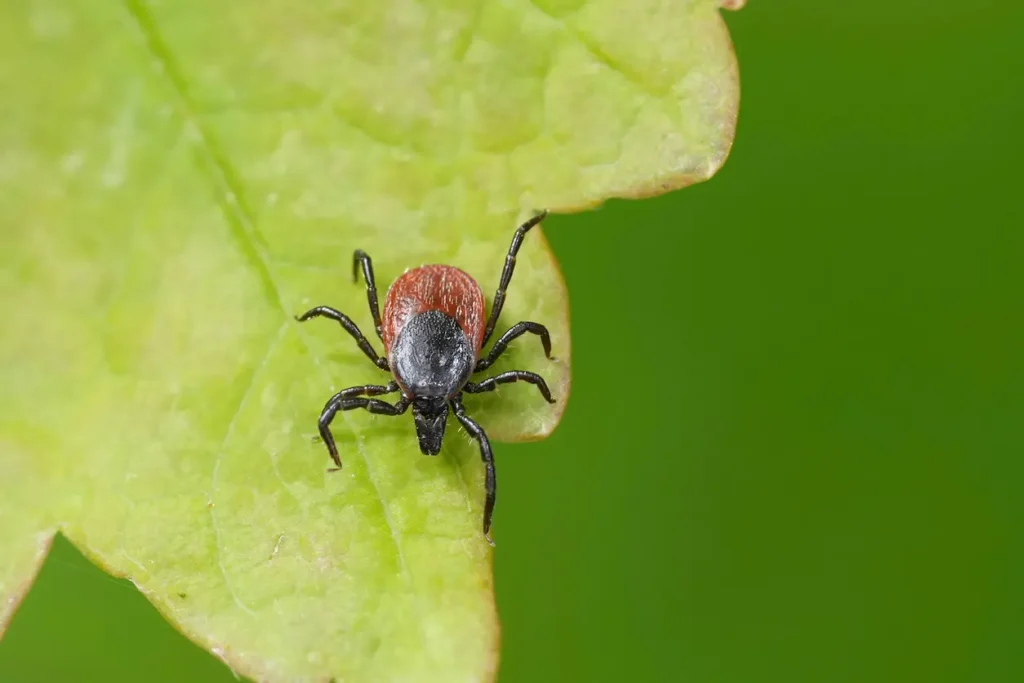
Understanding Tick Behavior
Ticks are parasitic arachnids that survive by feeding on wildlife and pets—and, if given the chance, people. The Lowcountry’s humid subtropical climate lets ticks stay active nearly year-round. Shade, moisture, thick leaf litter, brushy edges, and plentiful hosts (songbirds, deer, raccoons, feral cats) create the perfect storm. Even in “winter,” a string of mild afternoons can restart activity, and spring/fall shoulder seasons often bring peak pressure.
Along neighborhood trails like the West Ashley Greenway, Palmetto Trail segments near Awendaw, county parks from James Island to Palmetto Islands in Mount Pleasant, and coastal preserves like Edisto Beach State Park and Pinckney National Wildlife Refuge, ticks wait at knee height on grass stems and low shrubs for a passing host. At home, they concentrate along fence lines, dog runs, woodpiles, crawl-space perimeters, hedgerows, and play-area borders—exactly the places people and pets move daily.
The most common tick species in the Lowcountry include:
- Black-legged tick
- American dog tick
- Brown dog tick
- Lone star tick
Each behaves a bit differently. Black-legged ticks (associated with Lyme) favor shaded, leafy areas and can remain active during cool spells. American dog ticks and lone star ticks work tall grass, edges, and trail borders where they can attach as you brush by; lone stars are widespread in coastal South Carolina and are linked to ehrlichiosis and the alpha-gal red-meat sensitivity. Brown dog ticks are the homebody of the group—able to complete their life cycle indoors if dogs come and go from kennels, garages, or porches.
Seasonally, expect a spring surge (nymphs are tiny and easy to miss), another lift in early fall, and “bonus” activity anytime humidity and temperature spike together. That’s why consistent prevention—yard adjustments plus professional service—is more reliable than one-and-done treatments in our region.
Here’s how to recognize ticks up close:
- Adults are about apple-seed size; nymphs look more like poppy seeds and are easily overlooked.
- After feeding, ticks swell and darken; you’ll notice a rounded, engorged abdomen.
- The body has two main sections—a small head (capitulum) and a larger abdomen.
- Eight legs total (four pairs), with the front pair angled forward for “questing.”
Understanding where ticks hide and hunt—cool edges, leaf litter, and shaded transitions—helps us build a plan that cuts encounters dramatically on Lowcountry properties.
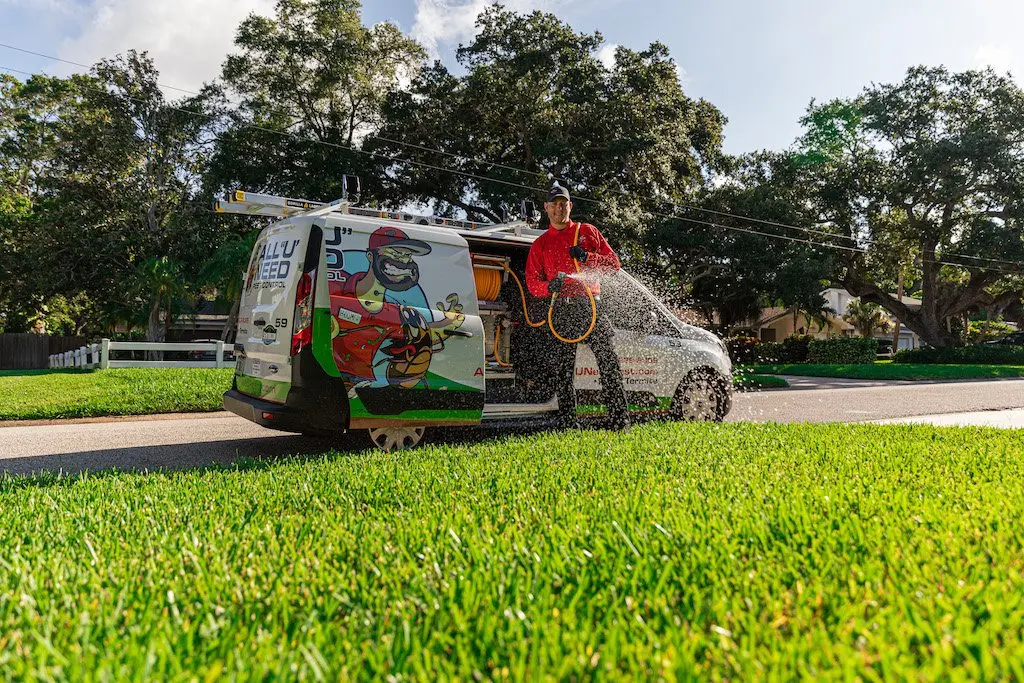
Risks Associated With Ticks
The Lowcountry lifestyle is outdoorsy by design—Hampton Park strolls, Shem Creek sunsets, Riverfront Park concerts, Sunday marsh walks, and backyard oyster roasts. That time outside raises your chance of contact with ticks. Bites can be minor, but they also bring disease risks for people and pets. A layered approach—yard maintenance, personal habits, and targeted professional treatments—keeps risk low.
Lyme Disease
Transmitted by infected black-legged ticks, Lyme can begin with fatigue, fever, headaches, muscle aches, and sometimes a bull’s-eye rash. Left untreated, it can involve joints, heart, and the nervous system. In the Lowcountry, consistent tick checks after trail use or yard work, light-colored long sleeves/pants for brushy chores, and fast removal with fine tweezers reduce risk. Our program lowers encounters by targeting leafy, shaded harborage where black-legged ticks thrive.
Rocky Mountain Spotted Fever
American dog ticks can transmit RMSF, a serious bacterial illness marked by fever, headache, and a spreading rash. Early treatment matters. We focus on the tall-grass and fence-line corridors that dog ticks patrol and adjust timing around storm cycles and mowing schedules so protective barriers remain intact when you need them most.
Tick Paralysis
A neurotoxin in some tick saliva can trigger sudden weakness—more often in pets, but occasionally in people. Removing the tick reverses symptoms, so early detection is key. We combine yard strategy (sunnier play zones, drier edges) with veterinary preventives to reduce the chance of attached ticks going unnoticed.

Signs of Tick Infestation
Ticks rarely announce themselves until you start finding them—on pets, on clothing after yard time, or attached after a walk under oaks and pines. Around the Lowcountry, these red flags mean it’s time to act:
Bites
You might see a small red bump, itch, or irritation. Monitor for flu-like symptoms and expanding rashes, and talk to a clinician if you feel unwell. A cluster of unexplained bites after spending time in shaded edges often signals yard-level pressure.
Ticks on Pets
Check dogs and outdoor cats around the ears, collar line, tail base, and between toes—especially after trail days, marsh edges, or time in the shade. Frequent finds suggest your fence lines and brushy borders are active zones.
Tick Eggs
Reddish-brown clusters in protected, humid spots (beneath steps, in kennel seams, under stored lumber) indicate a population building for the next warm stretch. Eggs are tough to spot and tougher to manage without a plan—professional help prevents an explosion later.
Ticks in Your Yard
Tall grass, leaf litter, and thick ornamental beds (camellias, sasanqua, azaleas) create cool microclimates where ticks wait. If you routinely find ticks after mowing, gardening, or kids’ playtime, the edge habitat on your property is likely the culprit.
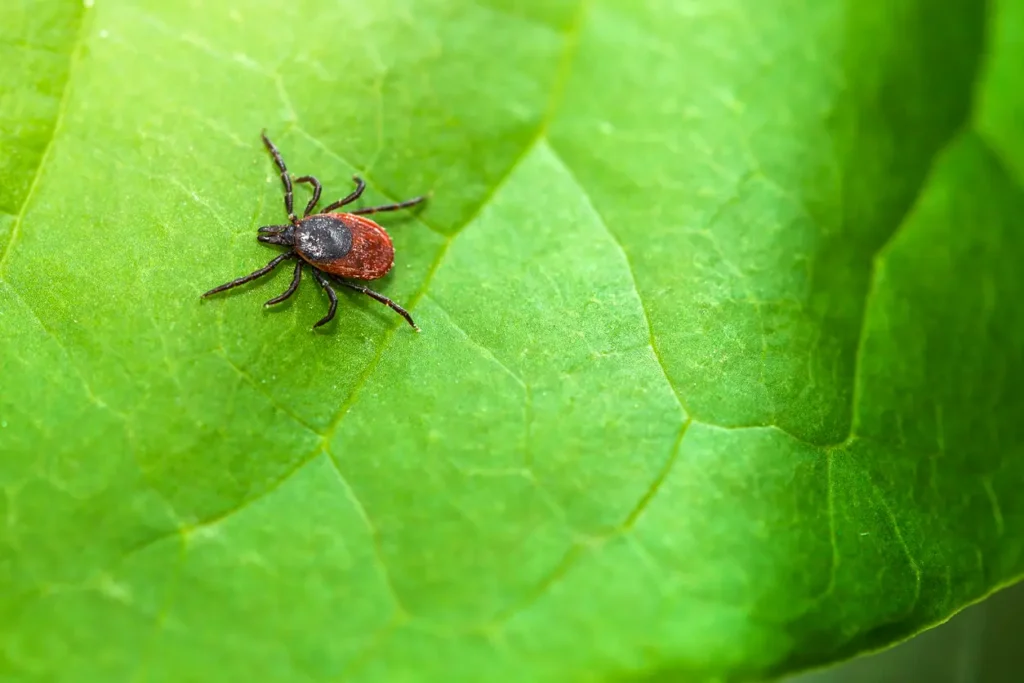
Effective Tick Treatment Methods
Results come from doing the right things in the right places, not from blanket spraying. We start with a detailed outside-in assessment, then combine habitat modification, targeted applications, and education so the improvements last—through the season and after storms.
Habitat Modification
Creating a less hospitable yard is half the win in the Lowcountry. We tighten and brighten the zones where families and pets live while addressing the shaded edges where ticks wait.
- Seal small gaps around crawl-space doors and thresholds to keep wildlife vectors out.
- Thin shrubs and keep grass trimmed along fence lines and play borders.
- Clear woodpiles, rock stacks, and leaf litter where humidity lingers.
- Let more sunlight reach high-traffic areas; convert dense edge beds to mulch or gravel buffers.
Chemical Treatments
For active pressure, we use low-odor, reduced-risk formulations placed on transit corridors—fence lines, leafy margins, under decks, and the shaded “green belts” pets and kids cross daily. Timing matters; we schedule around rain and wind so residues set properly and protection holds between fronts.
Targeted Applications
If monitoring shows hotspots (kennel perimeters, crawl-space edges, stacked-wood corners), we focus there. Precision beats volume; treating the few square feet where ticks consistently quest produces outsized reductions in encounters.
Education
We leave you with a short, Lowcountry-specific game plan—when to mow, how to handle leaf litter, where to create sunny breaks, and what to check after a weekend on the trail or water. Clear, simple steps make prevention easy to maintain.
Our process includes:
1. Inspection
We map shade, moisture, and movement: how wind and sun hit your lot, where pets travel, where kids cut through, and which edges stay damp. Expect photos and a prioritized plan that makes sense in minutes.
2. Treatment
We apply products where ticks quest and hosts pass—not across open living areas. Applications are timed to weather windows common in the Lowcountry so barriers cure and hold. You’ll get any brief re-entry guidance at the door.
3. Maintenance
Short follow-ups verify reductions and adjust placements if a storm, heat wave, or landscaping change shifts pressure. Many homes then shift to a light, seasonal cadence to stay ahead through long warm months.
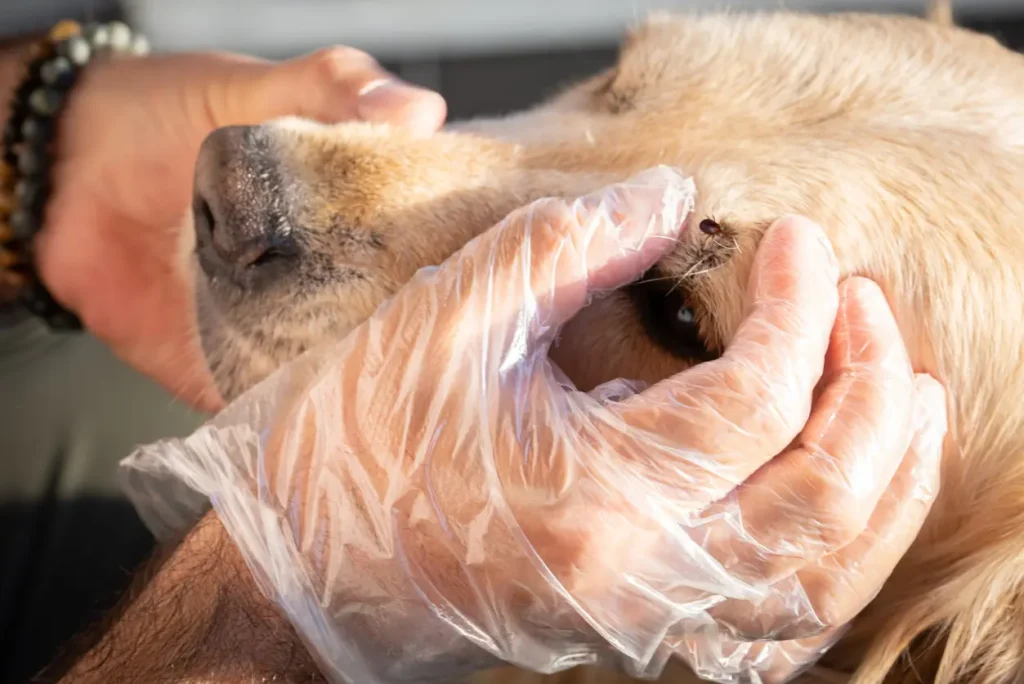
Pet-Safe and Eco-Friendly Solutions
People, pets, and our coastal ecosystems come first. Protection shouldn’t turn your yard into a “spray zone.” We design programs that use less product, better placement, and more prevention.
Earth-Friendly Treatments
Where appropriate, we incorporate botanically derived or reduced-risk products and emphasize voids, seams, and edges over broad surfaces. This keeps chemistry where it works hardest while minimizing exposure.
Minimum-Risk Pesticides
We avoid indiscriminate applications. Instead, we rely on minimum-risk, targeted placements that respect porches, play sets, pollinators, and wildlife corridors while still cutting tick encounters dramatically.
IPM
Integrated Pest Management ties it together—inspection, habitat tweaks, product choice, and monitoring. In the Lowcountry, that means accounting for humidity cycles, shade bands, wildlife vectors, and storm timing so protection stays consistent when weather pivots.

How to Prevent Ticks
Homeowner habits multiply the impact of professional service. A few repeatable, 10-minute wins each week keep pressure low even in a long warm season.
Change Your Landscaping
Trim grass short along edges; open dense shrub borders; and use mulch or gravel barriers where the lawn meets woods, marsh edges, or HOA greenways. Sunlight and airflow are your friends—especially around play areas and dog runs.
Invest in Tick Repellents for Pets
Work with your vet on year-round preventives. Check pets after trail days or marsh walks and wash bedding routinely. If you use dog doors or kennels, keep those transitions sunny, clean, and dry.
Spray Repellent on Your Clothes
Use EPA-approved repellents before yard work, gardening, or trail time. Treat shoes and socks; that simple step blocks many attachments where ticks first make contact.
Wear the Right Clothing
Choose light-colored, breathable long sleeves and pants for brushy chores. Tuck pants into socks when moving through thick edges—especially under oaks and pines.
Check for Ticks After Outdoor Activities
Shower soon after coming inside; do a full tick check (behind knees, waistband, hairline). Catching a tick early often prevents disease transmission.
Avoid Areas That Might Contain Ticks
Stay centered on paths in county parks and greenways, and prune private footpaths to avoid brushing vegetation. Keep kids’ shortcut trails wide and sunny.
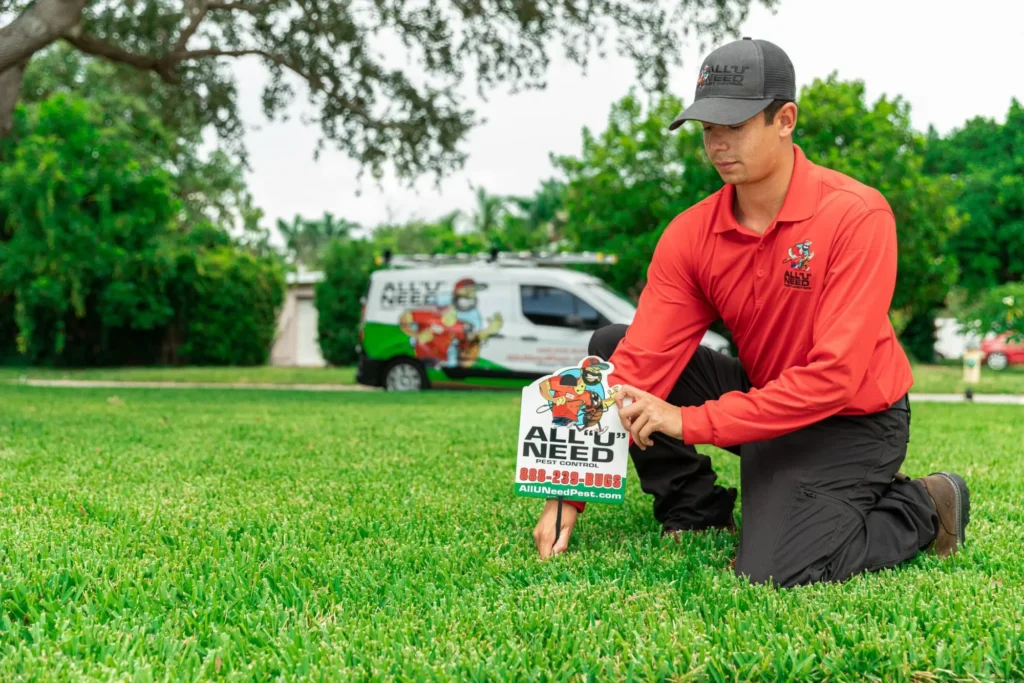
Choose All U Need Pest Control for Tick Control in Lowcountry, SC
You shouldn’t have to trade Lowcountry living for tick worries. From historic streets on the Charleston Peninsula to Summerville, Goose Creek, and Hanahan; from Johns Island and James Island to Kiawah, Seabrook, and Edisto; and down the coast through Beaufort, Port Royal, Bluffton, and Hilton Head Island, we build plans that fit your lot, your routine, and our climate.
- Local know-how: We understand how salt-marsh breezes, live-oak shade, and storm cycles shift tick pressure week to week.
- Tight, targeted work: Treatments go where ticks quest and hosts move—not everywhere people live.
- Clear communication: Photos, plain-English notes, and a short checklist you’ll actually use.
- Guarantee-backed: If activity persists, we return and adjust. Simple as that.
Call 1 (888) 239-BUGS or request your free inspection online. We’ll inspect, treat, and maintain a Lowcountry-smart barrier so you can enjoy porches, play spaces, and trails—without the ticks.
Location Contact:
419 N Cedar St Summerville, SC 29483
Get Directions for 419 N Cedar StSummerville, SC 29483 on Google Maps843-489-8818
Call All "U" Need Pest Control